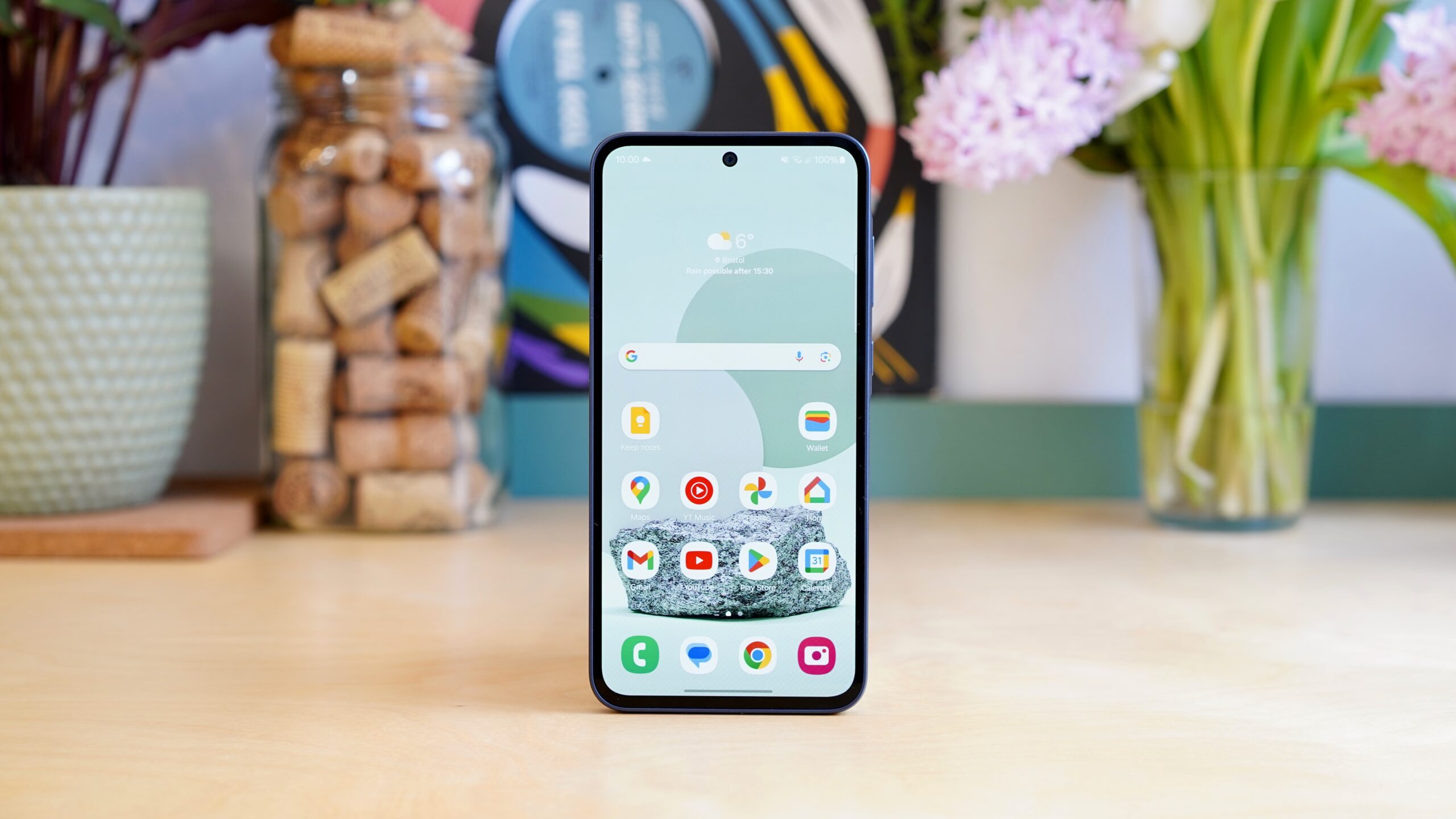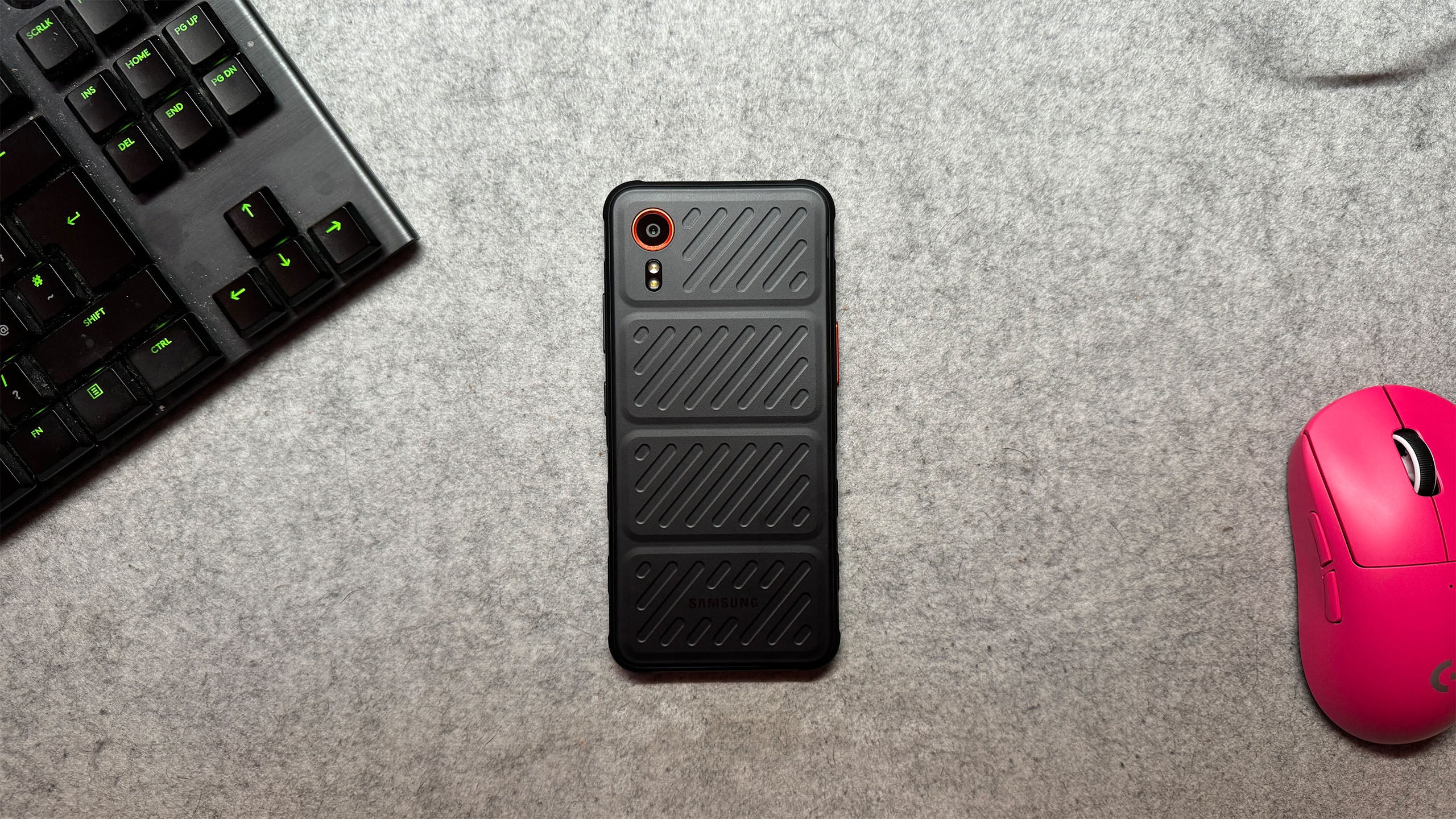Poco F4 GT Review
The Poco F4 GT is a gaming phone with a top-tier processor, and costs significantly less than some in this class. However, its battery life is fairly short, the level of performance throttling is disappointing and it gets quite hot in normal use – which helps explain why that throttling is necessary. Introduction The Poco F4 […]

Verdict
The Poco F4 GT is a gaming phone with a top-tier processor, and costs significantly less than some in this class. However, its battery life is fairly short, the level of performance throttling is disappointing and it gets quite hot in normal use – which helps explain why that throttling is necessary.
Pros
- Glass and metal design
- Powerful speakers
- Bright OLED screen
- Interesting gamepad-style trigger controls
Cons
- Severe performance throttling during gaming
- Short battery life
- Camera array is only OK
- Gets warm readily
Availability
- UKRRP: £699.99
Key Features
- Magnetic pop-up triggersSliders on the side of the phone make trigger buttons pop out of the frame. These are used to emulate touchscreen taps, so can be used with any game or app.
- 120W HyperChargeHigh wattage charging fills up the phone battery completely in 30 minutes 22 seconds according to our tests. A 50% charge takes less than 10 minutes.
- Qualcomm Snapdragon 8 Gen 1 SoCThis phone has one of the most powerful SoCs available at the time of release, a chipset usually seen in more expensive phones.
Introduction
The Poco F4 GT is part of a series from Xiaomi that appeals primarily for techies and mobile gamers. Early Poco phones were nigh-on unbeatable in the performance they offered for the money.
This phone is a little different. The Poco F4 GT costs £699, more than a Google Pixel 6 but – granted – still significantly less than something like the Asus ROG Phone 5S.
I make that comparison because the Poco F4 GT is a dedicated gaming phone; it has a “gamer” design, and interesting buttons that emulate the feel and function of a gamepad’s triggers.
These are nicely engineered but not hugely comfortable to use, making a Razer Kishi a better solution for those who want the gamepad experience on their phone. There are also questions over the Poco F4 GT’s performance.
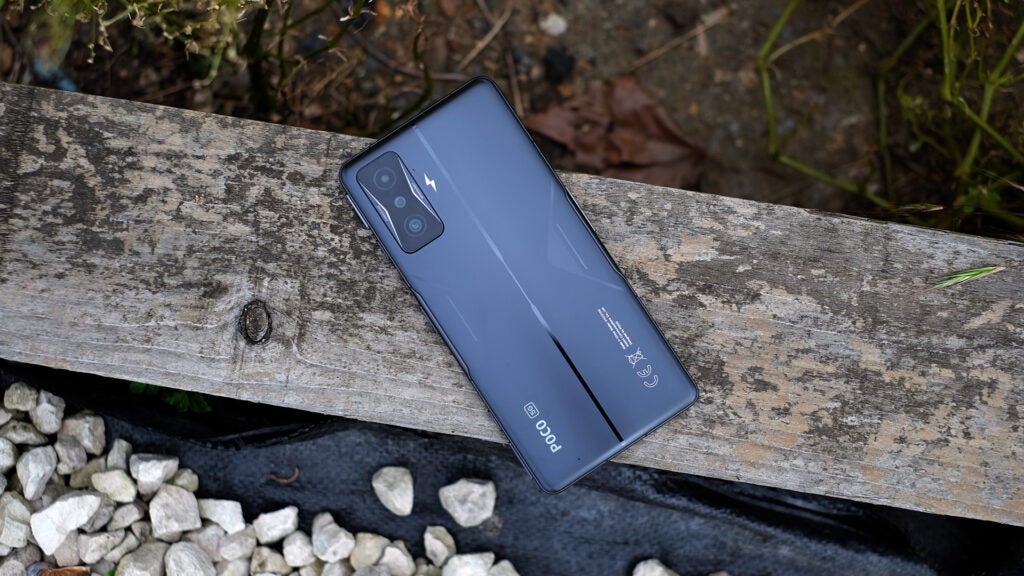
While it uses the top-tier Snapdragon 8 Gen 1 SoC, performance ends up throttled hard and fast. And relatively short battery life means you’ll have to lean on the, admittedly super-quick, 120W charging.
Like other Poco phones, the Poco F4 GT does not have a great camera array either. While the main one is sound, and snappy to use, it falls behind the standard at £700 with limited low-light performance and fine texture detail retention.
A super-powered mid-price gaming phone is a good idea in theory, but it does not pan out perfectly here thanks to fairly severe performance throttling and mediocre battery life.
Design
- Powerful speakers
- Quality glass and metal build
- Gaming style: a benefit to some, off-putting to others
The Poco F4 GT is made in the style of dedicated gaming phones, like those from the Asus ROG series. It is not what many would define as attractive, but for those in for the ride, Xiaomi has nailed the style.
Triangular indents sit in the camera housing, the finish on the rear cover, while the camera flash LED sits inside a lightning strike-shaped cutout.
This cod-seriousness is exactly what we see in some of the best gaming laptops we test. I didn’t find the look all that appealing, but have the same reaction to LED-packed gaming PCs with giant fan outlets, so that makes sense.
However, there are plenty who will appreciate the Poco F4 GT’s style, and this handset fulfils the brief just as well as pricier phones. The materials used are excellent too.

The Poco F4 GT’s back is glass, and its sides are aluminium. The only plastic on show here is a tiny band of the stuff between the display glass and the metal sides. You couldn’t ask for a better construction. Pricier phones may have curved glass fronts, but this is arguably not a great fit for a gaming phone. Curved front glass makes a phone feel smaller, but also pools reflections, making creating bright lines down the side for the display in certain lighting conditions. There’s none of that effect here.
Prepare yourself for a larger phone, though. The Poco F4 GT weighs 210g and is 8.5mm thick and 76.7mm wide, making it a bit chunkier than plenty of its less-nerdy contemporaries.
The Poco F4 GT does not have an in-screen fingerprint scanner, instead using the more economical side-loaded pad, and it doesn’t have a 3.5mm headphone jack either. However, the stereo speakers are loud and beefy-sounding, which is far more important in a gaming phone.
One design quirk of this device is its highly unusual “magnetic” side buttons. Two sliders sit on the right side of the Poco F4 GT, and each lifts up a button that acts a bit like the trigger on a gamepad. These do not mimic the inputs of such a pad though, and instead are used to imitate touchscreen presses. You set the zone, effectively taking over the role of on-screen virtual controls.
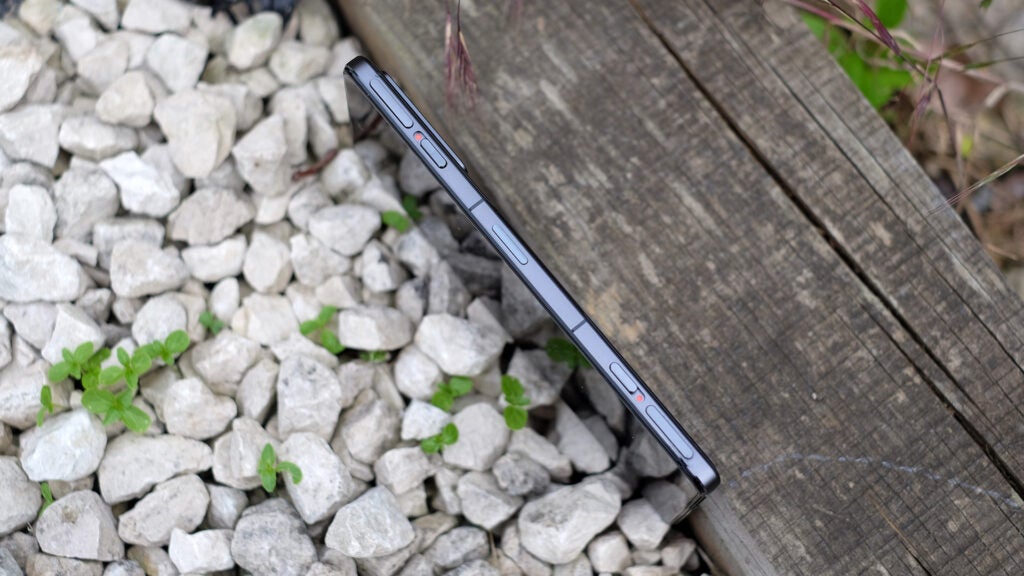
It’s a great idea, and zones are set per game. I played Fortnite, using them to jump and shoot, and retro favourite Hill Climb Racing to control the entire game. They work well and feel sturdy. That they retract into the body avoids accidental presses, and you can set them to act as shortcuts when not playing a game. That said, the ergonomics here aren’t even at the same level as something like the Razer Kishi, which plugs two halves of a gamepad onto your phone.
The idea is sound, and so is the execution. But additional buttons mounted onto a thin phone often aren’t much of an upgrade to the virtual on-screen controls designed for the purpose.
Screen
- Good outdoors visibility
- A quality 120Hz OLED screen
- Nerd-friendly display controls
The Poco F4 GT has a 6.67-inch Full HD 120Hz OLED screen. This is the best we could ask for at £700, and while even more expensive phones have sharper displays, this phone would simply have to cost significantly more if it used one.
Vivid mode is used by default. This is an “intelligent” vibrant mode, in that while the app icons on your home screens will have eye-popping colour, when you go to the Photos app to look at shots taken with the camera, they won’t appear comically oversaturated.
This is vibrant colour done right, and there are other colour modes if you’d prefer a more reserved look. The Poco F4 GT offers possibly the most versatile, geek-friendly display tuning I’ve seen so far this year.
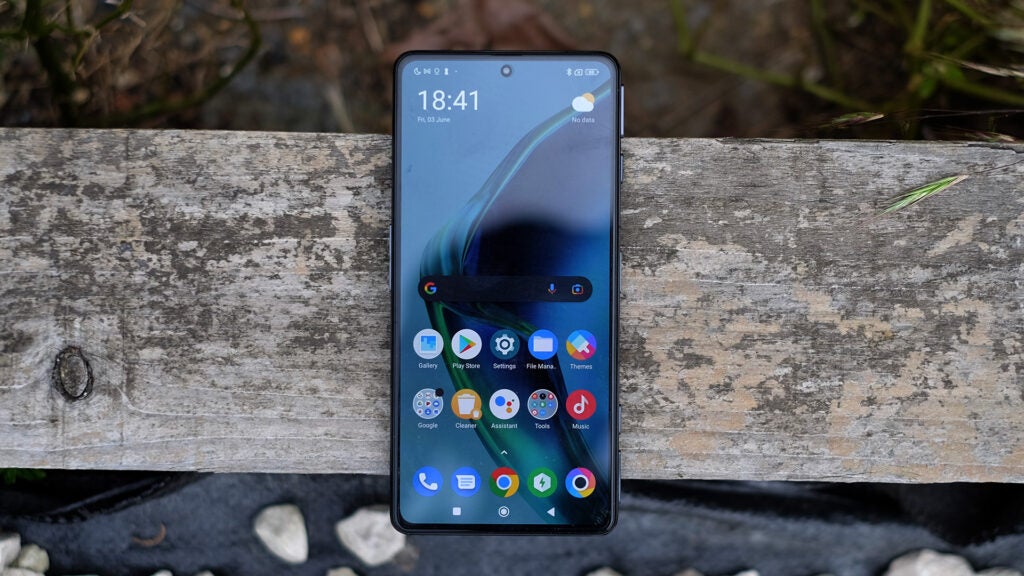
My most potent takeaway from the Poco F4 GT’s screen is how much it is willing to push display brightness in normal outdoors conditions. Many phones with top-quality mid-range displays will only use their true peak brightness when displaying HDR content, not when competing with super-bright sunlight.
The Poco F4 GT is unusually clear outdoors, because the OLED is allowed to reach closer to its true peak brightness outdoors than most. Outdoors clarity is therefore very good.
This display also rocks 120Hz, meaning it refreshes itself that many times per second, so you’ll get super-smooth scrolling around the Android operating system.
Software and Performance
- Excellent peak performance, but severe thermal throttling
- Gets quite warm with normal light use
- Fast general performance, but some UI annoyances and bugs
The Poco F4 GT has a Snapdragon 8 Gen 1 processor. While Qualcomm has announced the Snapdragon 8 Plus Gen 1, this is currently the most powerful SoC in this series actually available in phones you can buy at the time of release.
Its general performance is just as great as you’d hope, with apps and multi-tasking transitions being far faster than those of the OPPO Find X5 Lite I used before the Poco, getting you the flagship experience I’d expect from a phone with this kind of power.
However, I don’t think the Poco F4 GT delivers the kind of gaming phone performance the design seems to promise.

Peak gaming performance is fantastic, netting 10140 points in 3D Mark’s Wild Life benchmark. This is even more abstracted from real-world than a benchmark score usually is, though, as power is massively throttled during successive runs.
The Stress Test version of Wild Life runs the same GPU-maxing scenes 20 times to see how the results change. They drop almost immediately, down to 45.6% of its peak power (4628 points).
This kind of throttling happens in every phone I’ve used with the Snapdragon SoC, but it is worse there than in most. Perhaps the most important job of a gaming phone is to maintain good performance. But after a few minutes the Poco F4 GT’s dips below that of the Realme GT 3 Neo, for example, a phone with much less of a gaming focus.
This is an indictment of the Qualcomm Snapdragon 8 Gen 1 as much as the Poco F4 GT itself, but the phone’s cooling system clearly can’t keep up despite using vapour chambers. There is a solution. It’s just not a practical one. I re-ran the stress test but put the phone in the freezer, which brought the minimum run score up to 8807 points.
Benchmark Comparison Tests
The processor’s peak gaming performance is terrific, but you only get to experience it for minutes at a time. Well, unless you were to play outdoors in the snow.
It does not take much to make the Poco F4 GT warm up either. Just download a file or watch some YouTube, and the back will get noticeably warm.

On a more positive note, the Poco F4 GT’s general performance is excellent. It has the flagship zip that lets you jump from app to app snappily, and despite my reservations about performance, games run very well.
Fortnite’s 60fps mode is unlocked for the phone, as is the “Epic” graphics preset. However, I did notice more stutters dips after a few minutes of play, by which time the top of the phone — the parts near your left hand — were almost uncomfortably hot.
The Poco F4 GT runs Realme’s MIUI 13 software on top of Android 12, the latest version at the time of review. It looks good, but this is one of the quirkier custom interfaces around. For example, messes with the notifications drop down, using left-right swipes to let you switch between the function toggles and your notifications.
A few months ago I used a couple of MIUI phones in a row and got used to this style. Having used a couple of others phones since then, this change seems annoying and unintuitive all over again. Still, you will get used to it in time.
Unfortunately there is a serious software issue that appears to affect some Poco F4 GTs at launch, which makes the phone cycle between recognising and not recognising the SIM card when inserted, causing it to crash so hard the phone resets after a handful of seconds.
I had to factory reset the Poco F4 GT to solve this problem. And after letting the battery run down completely, the problem returned — this is something Xiaomi urgently needs to fix.
Camera
- Weak secondary cameras
- Primary camera is decent, but below par at £700
- Shoots nicely stabilised 4K/60 video
The Poco F4 GT has three rear cameras. A 50MP Sony IMX686 (1/1.7-inch) with f/1.9 lens is the primary, backed up by an 8-megapixel ultrawide and a 2-megapixel macro.
Its macro camera is bad, just like all tertiary cameras of this spec. The ultrawide is mediocre too, producing images with washed-out mid-tones and significantly different colour character to the main camera’s photos. There’s a very noticeable step down in quality from the main camera, and images don’t hold up too well when you zoom in.
That is normal for a mid-range phone, but as this sits towards the top of what I’d consider “mid-range”, you might hope for better performance.
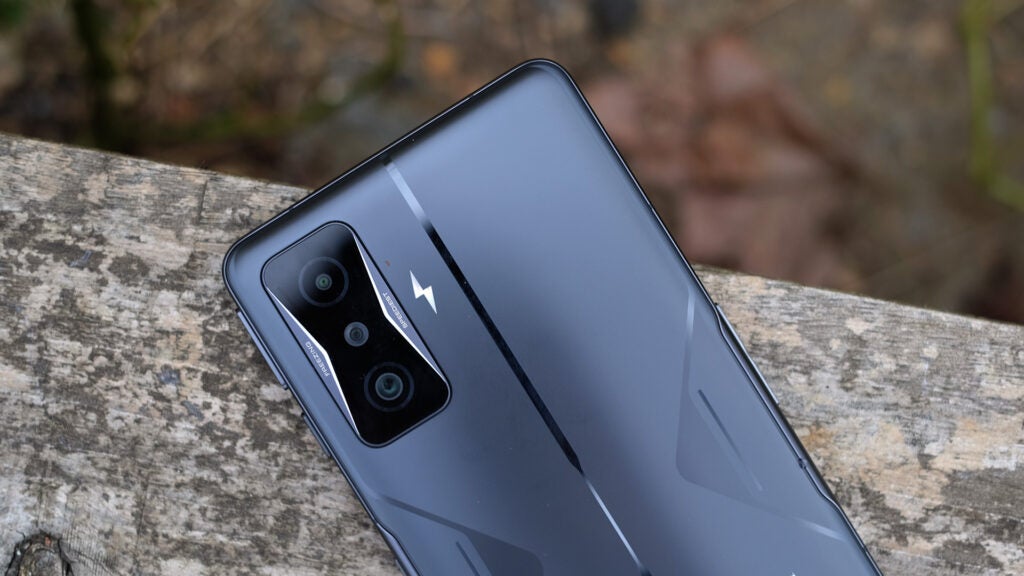
The Poco F4 GT’s main camera is much better but, again, does not quite match up to what you can get elsewhere for the money. Tight natural textures like leaves and grass can look unnatural up close, particularly in anything less than great lighting.
Far-away grass becomes fuzzy in some scenes, night photo quality is not as good as that of some significantly cheaper phone. Shadows detail is not improved as much as I’ve seen even at £400 when using the Night mode and results can be inconsistent, which may be thanks to the lack of OIS.
While the 2x zoom mode is useful for composition it doesn’t reveal significant extra detail not seen in standard pixel binned 1x shots. I used it to snap pics or some ducklings at one point, and the rendering of their downy feathers was mediocre.
The Poco F4 GT can take poppy, ready-to-share pictures, but a camera phone on the level of the Pixel 6 would still wipe the floor with this one. That said, I’d still be happy to use this phone as my day-to-day camera; it’s responsive, fast to shoot, and can take decent pictures. It just isn’t close to the best you can get for your money, and I’d hope for at least slightly better results considering the large 1/1.7-inch sensor size.

The ultra-wide camera (above) tends to smear strong light sources.

The main camera takes pleasant pictures (above), but they don’t always hold up well when you zoom in

Above is a demonstration of the potential lens flare from the camera.

As you can see above, the 2x zoom does not handle natural textures particularly well.

The above picture was shot using the Portrait mode, those blobs in the background emulating lens bokeh.

Up-close focusing can be tricky with the Poco. The above image was the best result we could get, following several attempts.

Even though the 2x zoom isn’t the best, it still often comes in useful for composing better shots like the one above.

As you can see in the preceding image, trickier textures such as fur and features can simply fall apart when the lighting is sub-optimal.

The level of detail can still hold up to some extent even when dealing with the 2x zoom, as in the shot above.


Thankfully there are no huge technical roadblocks for video. You can shoot at 4K resolution, 60 frames per second, and footage is still properly stabilised. I did notice detail shimmering in time with your footfalls, which suggests the frame exposure time is a little too long to avoid in-frame blur.
The Poco F4 GT also has a super stabilised mode, but I think the stabilisation at 4K/60 is good enough in most cases. It’s what I would suggest using by default, as the added stabilisation limits you to 1080p/30fps capture.
A 20MP selfie camera sits up front, and it is decent. Its resolution is a bit high for the 1/2-inch sensor size, which leads to only OK detail integrity, but selfies in general are good. Make sure you engage the Auto HDR mode when taking backlit photos, though, as otherwise big parts of the image will appear blown out. HDR is switched off as standard, for some reason.

Battery Life
- Shorter battery life than most
- Very fast 120W charging
- No wireless charging support
The Poco F4 GT is not a long-lasting phone. It has a 4700mAh battery, which is a little smaller than the 5000mAh used in many mid-range Xiaomi phones and far smaller than the 6000mAh of the Asus ROG Phone 5s Pro.
Its real-world stamina appears to be further lowered by how the phone operates. The way it gets warm with little provocation suggests power management could be better, and its high display brightness outdoors, while great for clarity, will do the battery life no favours.
On one day of testing, a day when I used the phone as normal rather than subjecting it to stress or performance tests, it was at 5% charge by 6pm. It was used to stream podcasts for a few hours earlier that day, but nothing else too taxing, and it was set to the standard “balanced” performance profile, which is what most buyers are likely to use on a day-to-day basis.
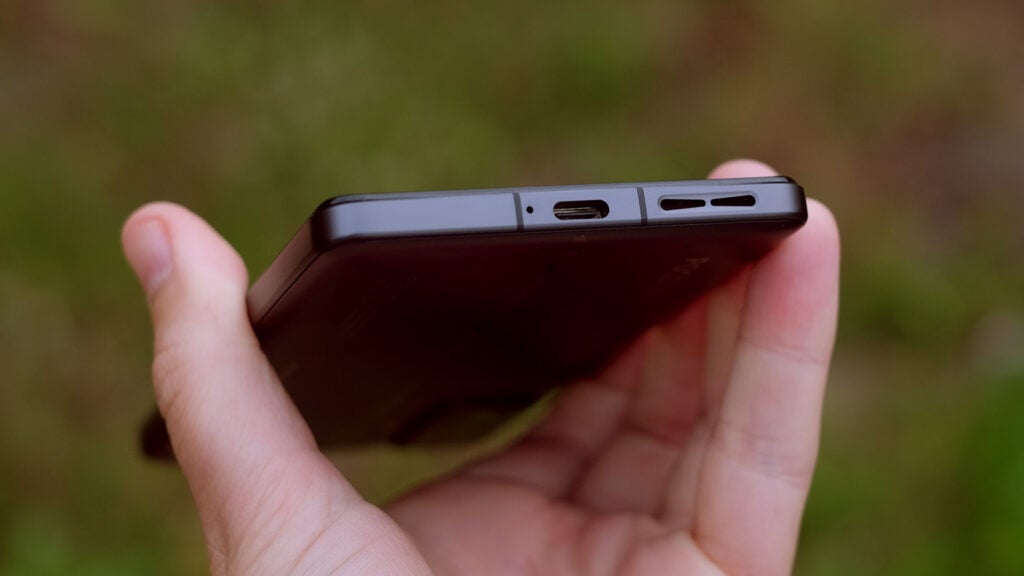
The battery level drops quickly enough to become a regular frustration for those who like to charge their phone overnight and not have to worry about it running out each day – which this phone may well do.
Fast charging is the partial solution we’re offered. The Poco F4 GT has 120W fast charging, which is superb. While it dips to 100W by its fourth minute on charge, 75W by the five minute mark, and dips further later on, its speed is still excellent.
You get from flat to 50% charge within 10 minutes. It ticks over to 100% at 24 minutes and — a cheeky way to make charging seem even faster — stops drawing significant power at 30 minutes 22 seconds. There’s no wireless charging, likely a budget-related cut.
Latest deals
Should you buy it?
This is a solid all-round entertainment phone thanks to its good speakers, bright and punchy display and high storage capacity. It’s also a glass and metal design,
The Poco F4 GT is a partial disappointment as a gaming phone as it suffers from just as severe — or worse — performance throttling as “normal” phones with the same SoC. Relatively short battery life means it won’t last through the day if you play any games.
Final Thoughts
The Poco F4 GT is a powerful gaming phone that has the right look and components for the job, incuding punchy stereo speakers. Its peak performance is excellent, but living with this phone takes the shine off an Android that looks great on paper.
Its battery life is relatively short, while it also gets warm frequently, and quite hot when playing games. This leads to very significant performance throttling that makes you question how effective a gaming phone this really is.
Xiaomi offers up the Poco F4 GT’s magnetic triggers as further justification. These are intelligently implemented but aren’t all that comfortable to use for any length of time, so you are still better off with a pad accessory if you want that console-style experience.
How we test
We test every mobile phone we review thoroughly. We use industry standard tests to compare features properly and we use the phone as our main device over the review period. We’ll always tell you what we find and we never, ever, accept money to review a product.
Used as our main handset during test period
Camera tested in variety of situations with all modes
Tested with synthetic benchmarks and real world use
FAQs
The Poco F4 GT does not support wireless charging, only cabled charging.
The phone has not water resistance rating, so should be used carefully around water.
There is no headphone jack on the phone.
Trusted Reviews test data
Full specs
The table below details the phone, and its closest rivals’, full specs.
Sustainability
TrustedReviews’ holds the fact that global warming is not a myth as a core value and will continuously endeavor to help protect our planet from harm in its business practices.
As part of this mission, whenever we review a product we send the company a series of questions to help us gauge and make transparent the impact the device has on the environment.
We currently haven’t received answers to the questions on this product, but will update this page the moment we do. You can see a detailed breakdown of the questions we ask and why in our sustainability info page.


